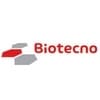
Salmonelosis en cerdos
Afema JA, Byarugaba DK, Shah DH, Atukwase E, Nambi M, Sischo WM. Potential sources and transmission of Salmonella and antimicrobial resistance in Kampala, Uganda. PLOS ONE 11 2016; e0152130.
Boyen F, Haesebrouck F, Maes D, Van Immerseel F, Ducatelle R, Pasmans F.Non-typhoidalSalmonella infections in pigs: a closer look at epidemiology, pathogenesis and control. Vet Microbiol 2008; 130:1-19.
Callaway TR, Morrow JL, Edrington TS, Genovese KJ, Dowd S, Carroll J, Dailey JW, Harvey RB, Poole TL, Anderson RC, Nisbet DJ. Social stress increases fecal shedding of Salmonella Typhimurium by early weaned piglets. Curr Issues IntestMicrobiol 2006; 7:65-71.
Ekperigin HE, Nagaraja KV. Microbial food borne pathogens. Salmonella. Vet Clin North Am Food AnimPract 1998; 14:17-29.
Falagas ME, Kasiakou SK, Saravolatz LD. Colistin: The revival of polymyxins for the management of multidrug-resistant Gram-negative bacterial infections. Clin Infect Dis 2005; 40:1333-1341.
Gradassi M, Pesciaroli M, Martinelli N, Ruggeri J, Petrucci P, Hassan WH, Raffatellu M, Scaglione FE, Ammendola
S, Battistoni A, Alborali GL, Pasquali P. Attenuated Salmonellaentericaserovar Typhimurium lacking the ZnuABC transporter: An efficacious orally-administered mucosalvaccine against salmonellosis in pigs. Vaccine 2013; 31:3695-3701.
Hedemann MS, Mikkelsen LL, Naughton PJ, Jensen BB. Effect of feed particle size and feedprocessing on morphological characteristics in the small and large intestine of pigs and on adhesion ofSalmonellaentericaserovar Typhimurium DT12 in the ileum in vitro. J AnimSci2005; 83:1554-1562.
Hurd HS, McKean JD, Griffith RW, Wesley IV, Rostagno MH. Salmonella enterica infections inmarket swine with and without transport and holding. Appl EnvironMicrobiol2002; 68:2376-2381.
Kim HB, Isaacson RE. Salmonella in swine: Microbiota interactions. Annu Rev AnimBiosci 2017; 5:7.1-7.21.
Linden PK, Kusne S, Coley K, Fontes P, Kramer DJ, Paterson D. Use of parenteral colistin for the treatment of serious infection due to antimicrobial-resistant Pseudomonas aeruginosa. Clin Infect Dis 2003; 37:e154-e160.
McEwen, Collignon PJ. Antimicrobial resistance: A one health perspective. Microbiol Spectrum 2017; 6(2):ARBA-0009-2017.
Rajtak U, Boland F, Leonard N, Bolton D, Fanning S. Roles of diet and the acid tolerance responsein survival of common Salmonella serotypes in feces of finishing pigs. Appl Environ Microbiol2012; 78:110-119.
Reed WM, Olander HJ, Thacker HL. Studies on the pathogenesis of Salmonella Typhimuriumand SalmonellaCholeraesuisvarKunzendorf infection in weanling pigs. Am J Vet Res 1986;47:75-83.
Scallan E, Hoekstra RM, Angulo FJ, Tauxe RV, Widdowson MA, Roy SL, Jones JL, Griffin PM. Foodborne illness acquiredin the United States—major pathogens. Emerg Infect Dis 2011; 17:7-15.
Tanaka T, Imai Y, Kumagae N, Sato S. The effect of feeding lactic acid to Salmonella Typhimuriumexperimentally infected swine. J Vet Med Sci2010; 72:827-831.
Verbrugghe E, Boyen F, Van Parys A, Van Deun K, Croubels S, Thompson A, Shearer N, Leyman B, Haesebrouck F, Pasmans F. Stress induced SalmonellaTyphimurium recrudescence in pigs coincides with cortisol induced increased intracellular proliferationin macrophages. Vet Res 2011; 42:118.
Visscher CF, Winter P, Verspohl J, Stratmann-Selke J, Upmann M, Beyerbach M, Kamphues J. Effects of feed particlesize at dietary presence of added organic acids on caecal parameters and the prevalence of Salmonella in
fattening pigs on farm and at slaughter. J AnimPhysiolAnimNutr 2009; 93:423-430.
Yin F, Farzan A, Wang QC, Yu H, Yin Y, Hou Y, Friendship R, Gong J.Reduction of Salmonellaentericaserovar TyphimuriumDT104 infection in experimentally challenged weaned pigs fed a Lactobacillus-fermentedfeed. Foodborne Pathog Dis 2014; 11:628-634.
El problema es que, en general, la resistencia a la Neomicina, por parte de E.coli y Salmonella, es alta. Monitoreos de antibiograma se hacen necessarios.
Lo ideal aún es mejorar la microbiota de los lechones, con atención a los manejos de biosseguridad, consumo de calostro y mejora de la capacidad inmune y de integridad de epitelios.
Teniendo en cuenta que la Salmonella entérica es una de las mas importantes enfermedades de transmisión alimentaria para los humanos y por ende la importancia en buscar fármacos que permitan su control, para minimizar las zoonosis. La Neomicina se convierte en una muy buena alternativa terapéutica para el tratamiento de enfermedad entérica asociada a E. Coli y Salmonella.
El uso irracional de medicamentos como promotores de crecimiento y su reciente prohibición (colistina), han permitido a estos agentes patógenos expresar toda su patogénesis, siendo aun mas grave la presentación de portadores asintomáticos, que excretan la bacteria e incrementan la presión de infección en las líneas de producción, con altas perdidas económicas asociadas a disminución de la ganancia diaria de peso y el aumento de la conversión alimenticia.
La Salmonella es una bacteria que tiene una gran capacidad adaptativa a situaciones hostiles y adquieren resistencia antibiótica rápidamente, por tal motivo la Neomicina que es un fármaco que cuando se suministra vía oral en el alimento, tiene la cualidad de pasar inalterado por el lumen intestinal, controlando estos agentes bacterianos sin ser metabolizado, esto le da la virtud de no generar resistencias bacterianas.


CIPROX AQUA







